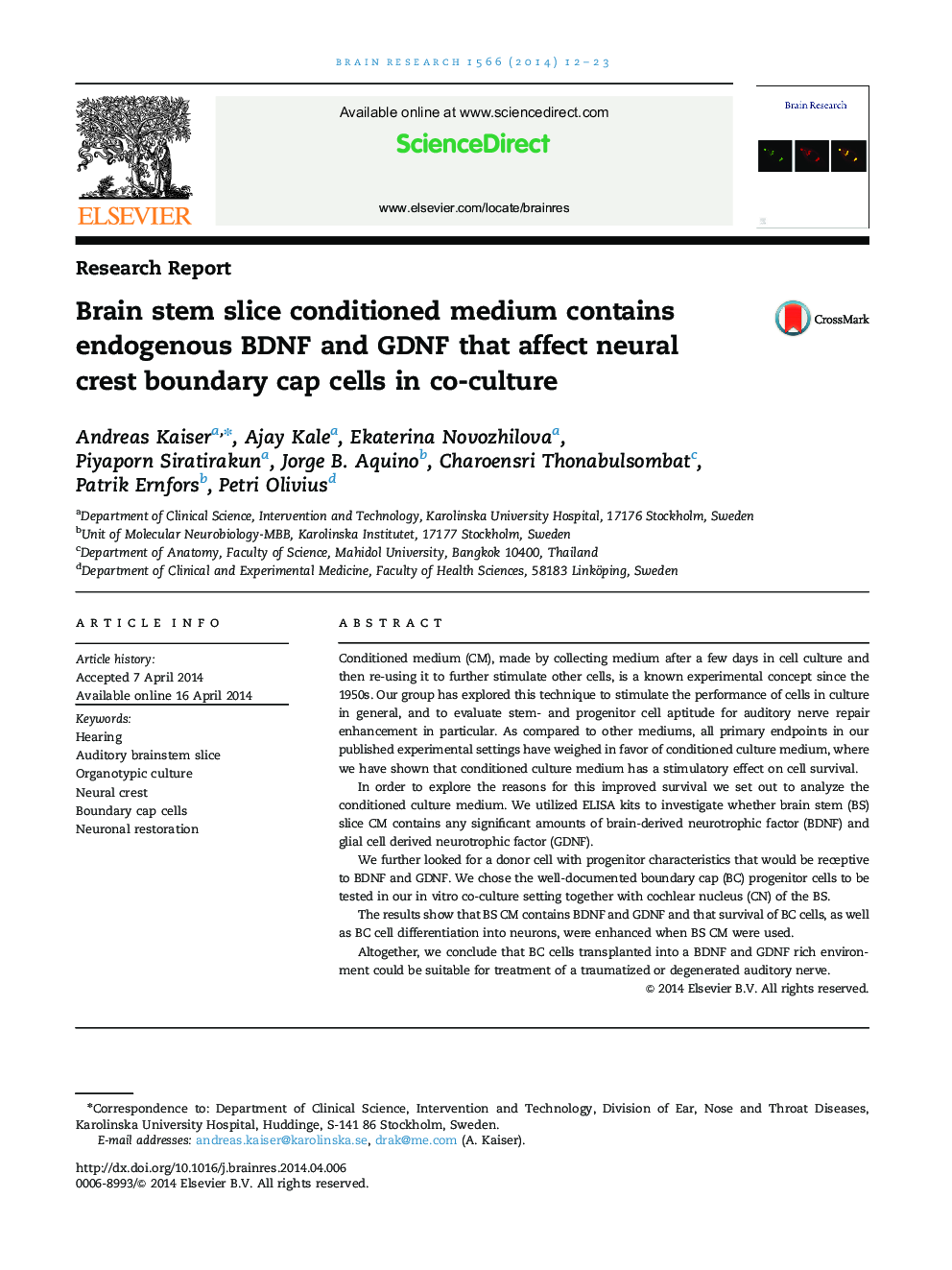| Article ID | Journal | Published Year | Pages | File Type |
|---|---|---|---|---|
| 4324337 | Brain Research | 2014 | 12 Pages |
•BDNF and GDNF were found in brain stem conditioned medium.•BDNF and GDNF in brain stem conditioned medium were released time dependently.•Boundary cap cell survival and differentiation were enhanced by conditioned medium.•Boundary cap cells could serve as donors to a damaged auditory nervous system.
Conditioned medium (CM), made by collecting medium after a few days in cell culture and then re-using it to further stimulate other cells, is a known experimental concept since the 1950s. Our group has explored this technique to stimulate the performance of cells in culture in general, and to evaluate stem- and progenitor cell aptitude for auditory nerve repair enhancement in particular. As compared to other mediums, all primary endpoints in our published experimental settings have weighed in favor of conditioned culture medium, where we have shown that conditioned culture medium has a stimulatory effect on cell survival.In order to explore the reasons for this improved survival we set out to analyze the conditioned culture medium. We utilized ELISA kits to investigate whether brain stem (BS) slice CM contains any significant amounts of brain-derived neurotrophic factor (BDNF) and glial cell derived neurotrophic factor (GDNF).We further looked for a donor cell with progenitor characteristics that would be receptive to BDNF and GDNF. We chose the well-documented boundary cap (BC) progenitor cells to be tested in our in vitro co-culture setting together with cochlear nucleus (CN) of the BS.The results show that BS CM contains BDNF and GDNF and that survival of BC cells, as well as BC cell differentiation into neurons, were enhanced when BS CM were used.Altogether, we conclude that BC cells transplanted into a BDNF and GDNF rich environment could be suitable for treatment of a traumatized or degenerated auditory nerve.
